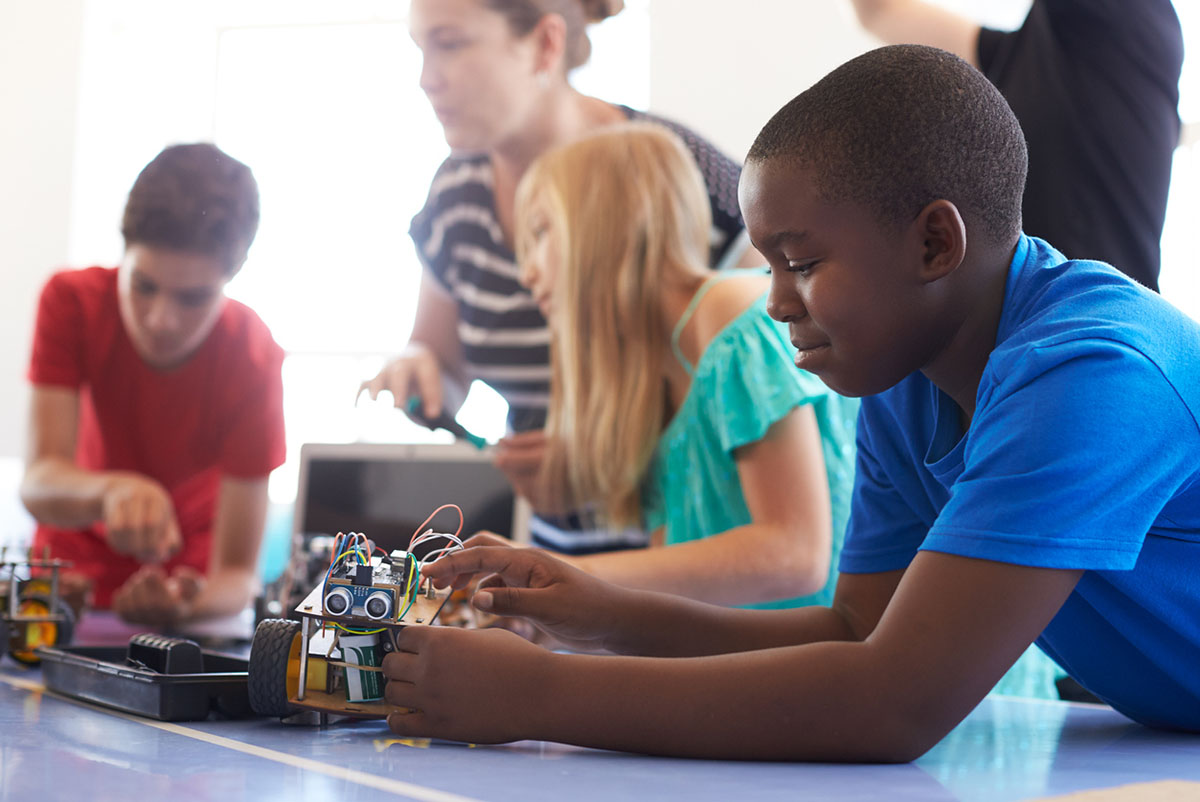Blog
Nurturing Inclusive Relationships in Schools and Out‑of‑School Time Programs
Humans share a fundamental need to belong and feel included.
Yet, too often, young people do not feel seen and welcome in their schools and programs. This is what we call a relationship gap—the distance between what young people need and what they experience.
Creating a relational climate that is intentional, inclusive, and equitable takes an investment of time and resources.
Our State of Relationships case study looked at schools and out‑of‑school time (OST) programs in Minnesota to further our understanding of what it takes to create relationship‑rich spaces for all young people.
As part of the study, we created a set of four briefs designed to help schools and OST programs foster relationship‑rich organizations where all young people experience the developmental relationships they need to learn, grow, and thrive. The briefs focus on critical aspects of becoming a relationship-rich organization including building supporting structures and creating an intentional, inclusive, and equitable relational climate.
Here are some key takeaways from the case study when it comes to building an inclusive relational climate.
A Sense of Belonging
In both schools and OST programs, a large majority of the participants in the case study said they were spending time and energy on building relationships with young people who adults typically struggle to engage. These young folks may be shy, have weaker social skills, have physical, cognitive, and/or mental health disabilities, or don’t seek out relationships with adults.
72% of school staff and leaders and 80% of OST staff and leaders said they were spending time and energy on building positive relationships with these young people.
While the numbers are positive, the findings still indicate that 20-25% of staff and leaders are not focusing their time and energy with the youth who most need strong connections and developmental relationships in their schools or programs.
The results were slightly higher when staff and leaders were asked about their investments of time and energy on all groups of youth, regardless of their identities (race, gender, sexuality).
80% of school staff and leaders and 90% of OST program staff and leaders reported spending time and energy on building positive relationships with all youth regardless of their identities.
Barriers to Creating Inclusive Relationships
“It’s really easy to build relationships with the students that you have more in common with. I think that staff need to be more open‑minded to the diversity in students’ experiences. Sometimes it’s hard for staff to make connections with kids because, maybe, we’re not coming from the same place or we have little understanding.” — OST staff, Twin Cities metro
The top barrier for both school and OST staff and leaders to building an inclusive relational climate was having different life experiences than the youth their organization works with. This is a challenge for many people working in schools and programs.
In another of our relationship-rich organizations briefs, we looked at the supporting structures that facilitate positive youth-adult relationships — such as mission and vision, hiring practices, time and resources for relationship building, and professional learning opportunities. Other barriers to being inclusive that school and OST staff and leaders identified included some that are directly affected by those supporting structures.
Staff and leaders cannot change the fact that their upbringing or life experiences are different from those of the young people they serve. But they can focus on changing what they can, such as adding more staff that reflect the diversity of the young people and gaining additional training/learning in trauma‑informed care and culturally responsive practices.
Here are some of the barriers identified by school and OST staff and leaders.
-
58% said staff have different life experiences than the youth their program or school works with.
-
55% said the diversity of the staff does not reflect that of the young people.
-
51% said the staff lack the skills necessary to provide trauma‑informed care.
-
47% said staff lack the skills necessary to engage youth in culturally responsive ways.
-
41% said the external systems they operate within are structurally racist.
Inclusivity Is Not an Accident
The State of Relationships case study indicates that schools and programs can take steps to nourish an inclusive climate where resources and energy are focused on building developmental relationships with all youth. Some of the actions staff and leaders can take include:
-
Focusing recruitment and hiring practices on adding staff who are strong relationship builders and who represent diversity in terms of racial, ethnic, gender, ability, and socioeconomic status.
-
Providing training and professional learning for staff and leaders on trauma‑informed care and cultural responsiveness.
-
Identifying and combating structural racism within organizations by identifying and reducing racially marginalizing attitudes, providing young people with avenues for contributing to racial justice, and listening and responding to youth voices when they speak out against racism.
Inclusive or Equitable: Is There a Difference?
Inclusivity and equity are often interrelated, or confused. But there is a difference between the two. A climate that is inclusive is one that provides positive and healthy relationships for all young people. An equitable climate ensures that all groups of youth have a fair chance of experiencing those benefits. Sometimes that means making extra efforts for some groups of young people.
Making a Commitment to Inclusion
The barriers to building an Inclusive Relational Climate that were identified in the State of Relationships case study are significant — but they are not insurmountable.
Relationship‑rich organizations are taking concrete steps to build diverse staff, develop the skills needed to provide trauma‑informed care, develop culturally responsive attitudes and practices, and address the larger context of systemic racism.
These are the relationship‑rich spaces that include all groups of young people, and where organizations can lay the foundation for equity.




